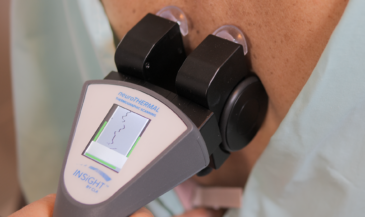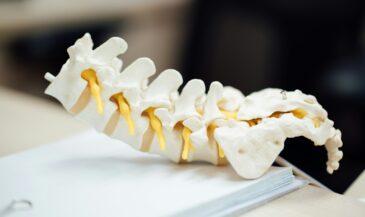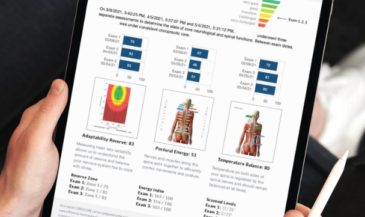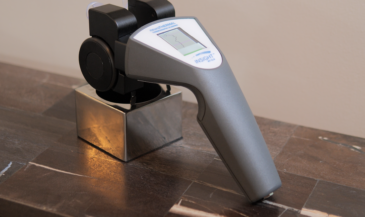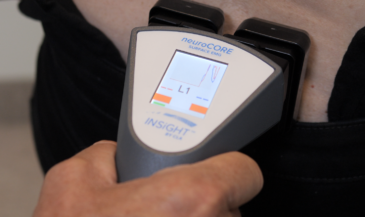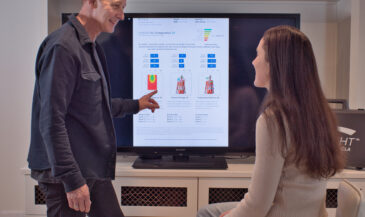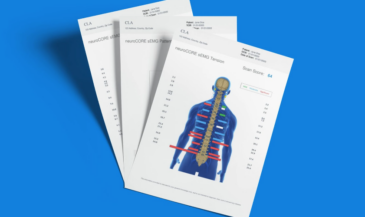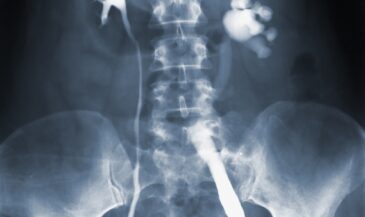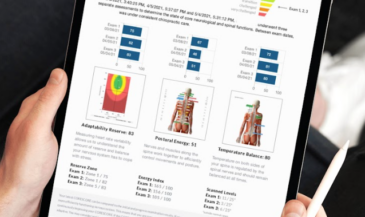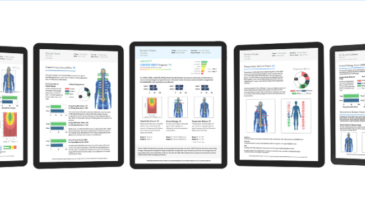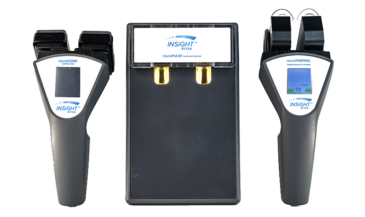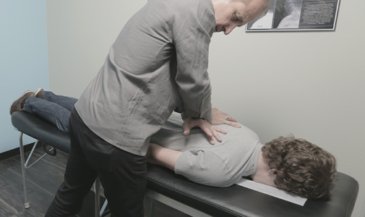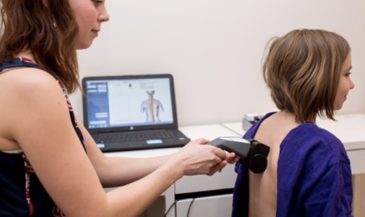Continuing Our Discussion on the 4 D’s
Have you worked your way through our earlier Blog Posts on the Destructive D’s: Dysafferentation, Dysponesis, Dysautonomia, Dyskinesis? As you did, you might have asked yourself some practical questions such as;
“How do I report scan findings so my patients will understand?’
“How would I have time to add in more tests to my exams?”
“How can I make all of this meaningful to patients?”.
“What is the research behind scanning?”
All great questions. To begin by answering, it’s important to know that thousands of offices, on a worldwide basis, focus on the Destructive D’s and scan and report with the INSiGHT every day. They rely on their scans to keep their office flowing as they adjust entire families towards great health.
Let’s tackle the first question in this Blog. How do I report objective scan findings so my patients will understand?
When planning a chiropractic care plan for a patient it is vital that the Chiropractor understands and addresses the fact that vertebral subluxations are devastating to the expression of optimal health and well-being. The four-dimensional model of vertebral subluxation: Dysponesis, Dysautonomia, Dysafferentation, and Dyskinesia, provides a comprehensive framework for evaluating and managing subluxations. I coined the term ‘The Destructive D’s’ to highlight how much each one impacts the nervous system. With INSiGHT scanning technology, Chiropractors have advanced tools to measure and communicate these dimensions to patients, enhancing the precision and effectiveness of care.
The easiest way to report on these dynamics is to collect scan data in the following sequence and by using the acronym; R E D.The first 3 D’s are critical for assessing the impact of subluxations on neurological performance and so R.E.D. refers to the order that the clinician interprets the scan sequence and reports the results to the patient. R refers to the patient’s Resilience and adaptive Reserve which is measured with the neuroPULSE (HRV), E refers to the patient’s neuromuscular postural Energy and is measured with the neuroCORE (sEMG) and the D refers to Depth of change within the spinal nerve control which identifies Dysautonomia and is measured with the neuroTHERMAL. Dyskinesia is a 4th D that confirms the impact of Subluxations on spinal motion and can be included by using a spineROM inclinometer.
Let’s break each of the destructive D’s down into patient friendly language that will help to explain what you are measuring and make reporting clear and concise.
1. Identifying Dysafferentation with the INSiGHT neuroPULSE Technology
Dysafferentation, the disruption of normal neurological input to the brain, is a critical aspect of vertebral subluxation that affects overall health. The INSiGHT offers chiropractors advanced tools to identify dysafferentation and communicate its impact effectively to patients.
Measuring Dysafferentation. INSiGHT technology employs Heart Rate Variability (HRV) testing to assess dysafferentation and resilience. HRV measures the variation in time intervals between heartbeats, providing insights into the autonomic nervous system’s adaptability and function. Vagal Nerve tone is a large part of this analysis.
Communicating Dysafferentation to Patients. INSiGHT’s neuroPULSE (HRV) reports highlight variability in heartbeat intervals, illustrating how dysafferentation affects Vagal tone and autonomic function. Ongoing stress and Sympathetic dominance drain the adaptive reserve, affecting body to brain communication. HRV tells the story of resilience, reserve and recovery. These powerful words redirect the patient away from immediate symptoms, helping them focus on building back their reserve and how they can bounce back to enhanced health with the benefit of regular chiropractic adjustments.
Improving Patient Outcomes. By integrating HRV testing into chiropractic examinations, practitioners can develop more targeted care plans that address dysafferentation. Restoring clear neural communication helps patients achieve better health outcomes and an enhanced quality of life. This non-spinal test shifts the message from spinal to neurological function.
2. Evaluating Dysponesis with INSiGHT neuroCORE Technology
Dysponesis, characterized by abnormal involuntary muscle activity, is a critical component of vertebral subluxation that can lead to significant health challenges. The INSiGHT, through surface electromyography (sEMG), offers a sophisticated approach to assessing and addressing dysponesis.
Measuring Dysponesis. Daily stress and unresolved spinal misalignments trigger a spinal reaction. INSiGHT’s neuroCORE scans the spinal muscle tone to detect areas of excessive or abnormal activity. These findings provide chiropractors with critical insights into the neuromuscular dysfunctions associated with vertebral subluxation, allowing for a more targeted and effective care plan.
Communicating Dysponesis to Patients. The INSiGHT translates complex sEMG data into visual, easy-to-understand reports. These reports help patients see how dysponesis impacts their musculoskeletal health and exhausts their neurological control, fostering a deeper understanding and engagement in their chiropractic care. The E in the R E D sequence refers to this exam report. When reporting neuroCORE exam findings it is wise to refer to the patient’s postural energy levels, and to discuss how much energy is being wasted when stress is unmanaged. With regular chiropractic care the patient’s energy and well-being will be positively impacted.
Improving Patient Outcomes. Incorporating sEMG scanning into chiropractic examinations allows for more precise care plans tailored to each patient’s needs. By addressing dysponesis, Chiropractors can show how spinal alignment and posture are intimately related to the neurological control of movement, behaviors and overall well-being.
3. Assessing Dysautonomia with INSiGHT neuroTHERMAL Scanning
Dysautonomia, the dysfunction of the autonomic nervous system, plays a significant role in vertebral subluxation and overall health. The INSiGHT provides Chiropractors with powerful tools to assess and communicate dysautonomia to patients.
Measuring Dysautonomia. INSiGHT technology uses thermal scanning to assess skin temperature differentials along the spine. These measurements provide insights into autonomic nervous system function, as deviations from normal temperature values can indicate patterns of dysautonomia associated with vertebral subluxation.
Communicating Dysautonomia to Patients. INSiGHT reports convert complex thermal data into clear, visual formats that patients can easily understand. These reports illustrate areas of temperature asymmetry, helping patients visualize how dysautonomia affects their health. The D in the R E D sequence refers to this exam report. When reporting neuroTHERMAL exam findings Chiropractors can introduce the spinal nerve connections to the organs and glands and discuss patterns of stress that require management. With regular chiropractic care the patients will experience the benefits of improved neurological control.
Enhancing Patient Care Plans. Incorporating thermal scanning technology into chiropractic practice allows for more comprehensive evaluations of dysautonomia. The ease of thermal scanning allows for the examination of newborns and infants, making chiropractic care available for all ages and promoting lifetime wellness checkups.
4. Measuring Dyskinesia in Chiropractic Care
Dyskinesia, the last dimension of the four-dimensional model, focuses on the importance of evaluating spinal motion and its impact on overall health. INSiGHT scanning technology offers advanced tools to measure dyskinesia and communicate these findings to patients.
Measuring Dyskinesia. INSiGHT technology utilizes advanced motion analysis tools like the spineROM to assess spinal biomechanics. This system measures the range of motion in different spinal regions with high precision, detecting abnormalities in vertebral movement associated with subluxation.
Reporting Dyskinesia to Patients. One of the key strengths of INSiGHT tech is its ability to generate visual reports that clearly communicate findings to patients. The spineROM reports show comparative graphs to the accepted normal spinal ranges which inform and inspire patients to be focused on recovering lost motion.
Enhancing Patient Care. By incorporating precise motion analysis into chiropractic examinations, practitioners can develop more targeted care plans. This approach fosters trust and collaboration, empowering patients to actively participate in their care journey.
Bringing It All Together
The four-dimensional model of vertebral subluxation—Dysponesis, Dysautonomia, Dysafferentation, and Dyskinesia—offers a comprehensive framework for understanding and addressing the complex nature of subluxations. With the integration of INSiGHT scanning technology, Chiropractors can measure each dimension with precision and communicate findings clearly to patients. This not only enhances the quality of care but also reinforces the vital role that chiropractic plays in promoting long-term health and well-being.
Enhance your practice with the quick, reliable, and informative scans provided by INSiGHT scanning. Chat with our team to get started today, or click here to take our Practice Blocker Quiz to find out if scanning is right for you.









